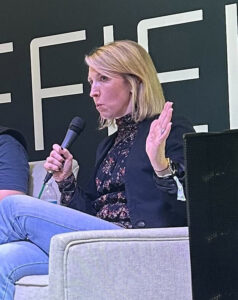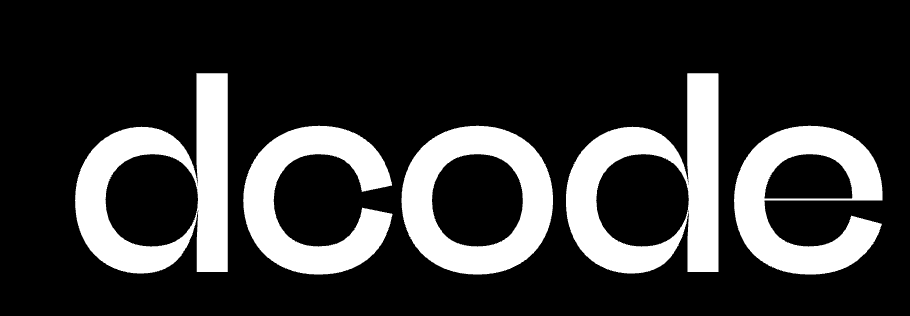
The new Executive Order on defense acquisition reform has the innovation community talking—and for good reason. It signals a significant opportunity to transform how the Department of Defense acquires technology and delivers mission capabilities at speed. We sat down with our CEO, Meagan Metzger, to talk about what the EO means in practice, and where we go from here.
As someone who’s spent her career helping bring the best of the commercial tech world to the federal government, Meagan brings deep insight into where the system stands—and where it needs to go.
1. The EO says that “our defense acquisition system does not provide the speed and flexibility our Armed Forces need.” Where are the shortcomings in that system?
The biggest challenge is that the system wasn’t originally designed for speed or adaptability. It was built for predictability and control. The structures, rules, and incentives reflect an era before software-defined capabilities and iterative delivery were the norm. Today, the pace of technological change, and the nature of modern threats, demand something different.
Like any long-standing system, it has accumulated layers of bureaucracy over time. This reinforces behaviors that prioritize compliance over outcomes. Requirements are often outdated before they’re approved. Budgets are set years in advance, long before we know what programs will actually need. And acquisition professionals are held responsible for delivering quickly, but often lack the authority, tools, or flexibility to make that possible.
This is a moment to reset expectations, because the urgency of the threat environment demands it. We’re asking acquisition teams to move at high speed within a system that isn’t built for agility.
2. The goal of reform is “speed, flexibility, and execution”—areas where Dcode has been in the trenches. Why is improving in these areas so critical?
Speed and flexibility aren’t optional anymore. They’re essential to meeting mission timelines and integrating the best available technology. Commercial companies move fast, iterate constantly, and deliver improvements through real-time software updates. That model simply doesn’t align with five-year acquisition timelines.
When we lack speed, we miss out on the most effective solutions. When we lack flexibility, we default to safer, but often less capable, choices. Both issues contribute to delays, cost overruns, and capability gaps.
The encouraging news is that we’ve seen firsthand that speed and flexibility are possible within government, when the right structures, authorities, and support systems are in place. That’s the real promise of this Executive Order: it can create space for those models to scale.
3. The SecDef has 60 days to deliver a reform plan that prioritizes rapid acquisition authorities and commercial-first strategies. What does that plan need to include to be successful?
Three things come to mind:
First, a clear vision of success. Terms like “rapid” and “commercial” need to be defined by outcomes—not just authorities. That means short timelines, commercial terms, scalable solutions, and minimal duplication. Everyone executing the plan should know what success looks like in those terms.
Second, executable models. This means helping acquisition teams stand up new operating constructs—think “RCO-in-a-box”—with real autonomy, deep commercial fluency, and close connection to operational users. The warfighter should remain central to the process. We’ve productized just such a construct, our Rapid Acquisition Integration Cell, or RAIC, that can be plugged in as a service to get results quickly, even if, or especially if, resourcing is being called into question.
Third, accountability and support. Programs that lead with commercial-first strategies should be empowered and supported to take smart risks. To match the EO’s intent, the plan should include protections for innovative approaches, and performance metrics that go beyond traditional measures, like time-to-capability, commercial leverage, and mission impact. Dcode has done extensive work on building and implementing these types of frameworks. The allies inside the DoD for this kind of reform are already out there. We work with them every day across each of the services.
4. The EO also calls for workforce reform—to incentivize and evaluate acquisition professionals on their ability to deliver commercial solutions and move with urgency. What will it take to make that happen?
This is so close to our mission, as some of the earliest work Dcode did to get commercial tech into the government was building this capacity in acquisition teams, so we’re thrilled to see it addressed in the EO. We need to treat acquisition professionals as strategic enablers of mission success. That starts with equipping them—through training, tools, and clear guidance—to make commercial-first, outcome-driven decisions. And then evaluating them based on the impact of those decisions, not just compliance with the process.
It also requires creating safe spaces for experimentation. Too often, acquisition leaders feel that the safest choice is the slowest one. That’s not just a structural issue, it’s cultural.
Changing the paradigm means recognizing that commercial acquisition is a skillset. It can be taught, practiced, and matured, and it should be a core competency on every acquisition team, not a niche capability.
5. Part of workforce reform is redesign, so not just training to avoid roadblocks, but removing them by eliminating unnecessary tasks and duplicative approvals. What should that transformation look like from your perspective?
A modern acquisition workforce should look less like a compliance engine and more like a mission-oriented innovation team. That starts with realigning roles so acquisition professionals can focus on strategy and problem-solving, not paperwork and gatekeeping.
It also means enabling collaboration across functions—contracting, finance, legal, and tech—so teams can move with shared context and common goals. We’ve helped agencies do this by forming integrated “mission cells” where commercial acquisition experts work side-by-side with end users and contracting officers. It’s a repeatable process and helps agencies move faster. That’s the kind of operating model we should be scaling.
6. The EO calls for a comprehensive review of Major Defense Acquisition Programs (MDAPs). How can commercial innovation play a role in that effort?
MDAPs are critical to national defense, but they can also become unwieldy—slow-moving, high-cost, and locked into legacy approaches. Commercial innovation offers a chance to “right-size” certain capabilities within those programs. For example, instead of custom-building every component, MDAPs can integrate modular, commercial-off-the-shelf technologies to reduce timelines and cost.
This doesn’t mean replacing complex systems overnight. It means giving PMs and acquisition leads more tools to de-risk programs with commercial tech where it makes sense. It also means adopting more iterative delivery models, where elements of large programs can be tested, fielded, and improved in smaller cycles. Lastly, we need to give programs the authorities and tools to do true strategic divestment of capabilities that are no longer needed, including the use of more budget authorities that give fiscal agility to do such. Dcode helps agencies identify where and how commercial technology can create those opportunities, then create the on and off ramps by leveraging agile acquisition and creative fiscal tools to get it done.
7. One of the EO’s aims is to streamline acquisition processes by eliminating unnecessary regulation. What does that look like in practice, and how can industry help?
Streamlining isn’t just about cutting red tape, it’s about removing outdated processes that no longer match how technology is built and delivered today. In practice, that means things like simplifying how commercial terms are accepted, reducing duplicative reviews, and shortening the time from need to contract.
The commercial tech industry can play a huge role by being transparent about their delivery models and engaging early with acquisition teams to co-design flexible contracts. Programs like Dcode’s have helped both sides—government and industry—speak the same language, which is essential to streamlining. Simplification only works if it builds trust and confidence in the system.
8. The EO encourages use of flexible authorities like OTAs and RCO-inspired models. But authorities alone aren’t enough, right? How do you make sure they’re used well?
Yes, exactly. Having the authority isn’t the same as knowing how to use it effectively. The key is institutionalizing best practices: when to use flexible authorities, how to structure them for speed and accountability, and how to evaluate vendors and outcomes.
Dcode has worked with agencies to create toolkits, playbooks, and support systems that demystify the use of OTAs and other authorities. The more we invest in helping acquisition professionals feel confident using these tools, the more impact we’ll see—not just faster awards, but better mission results.
Want to learn more about how Dcode can support your acquisition and innovation efforts?
We work across DoD and civilian agencies to build the commercial-first, outcomes-driven models that the EO envisions. Hit “Connect With Us” below, and let’s talk.

